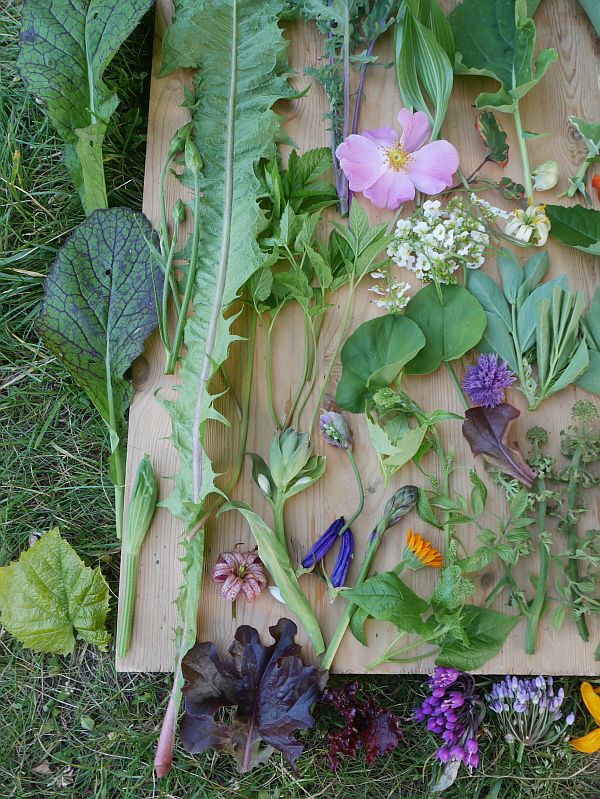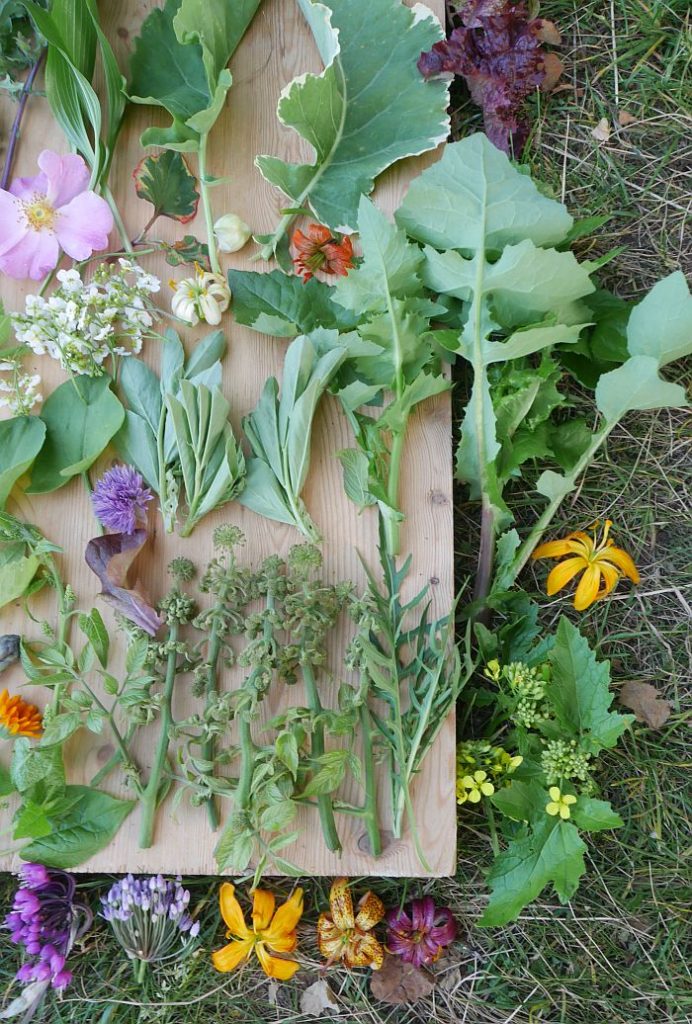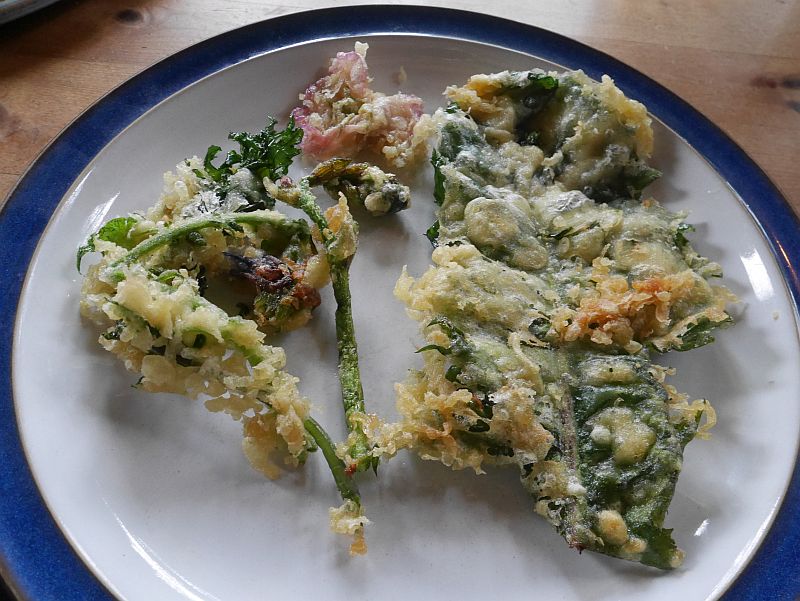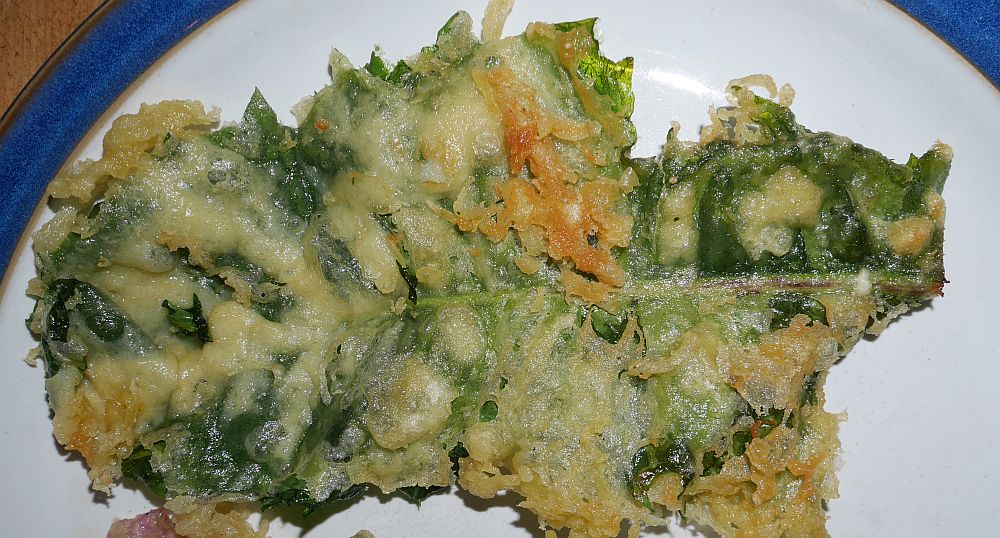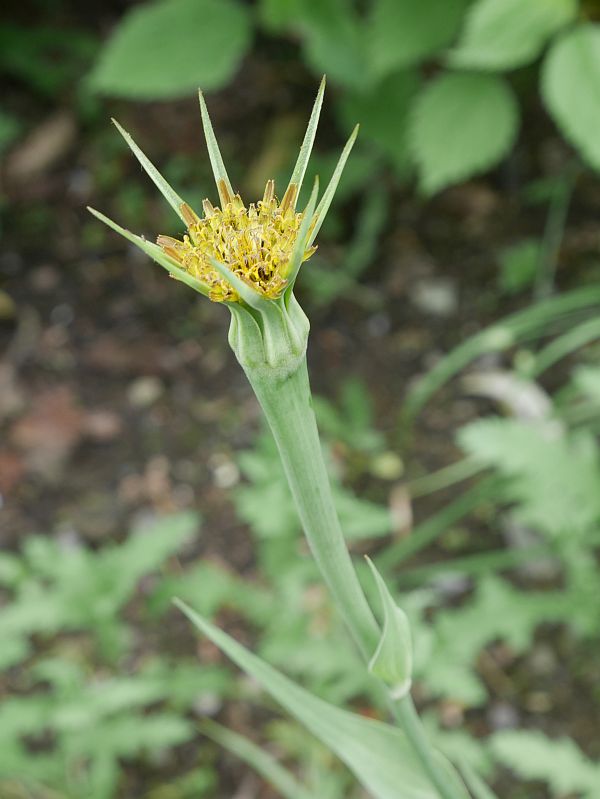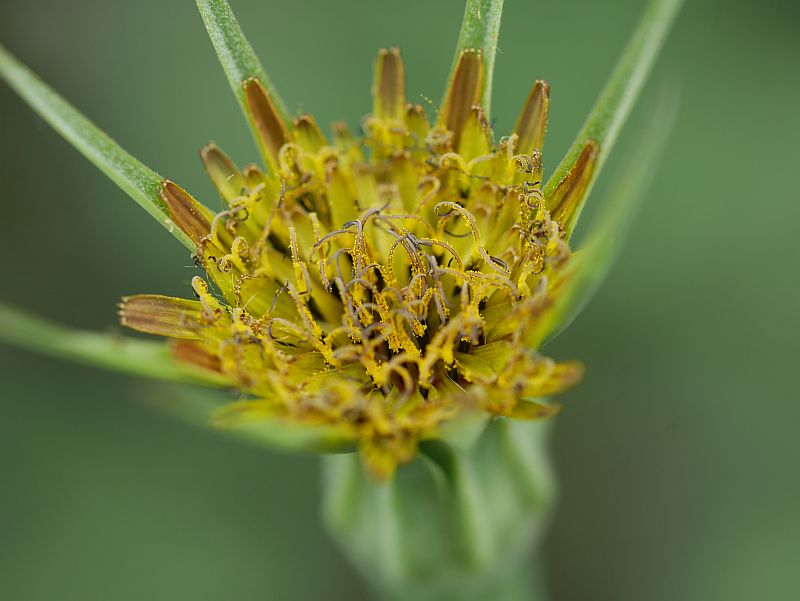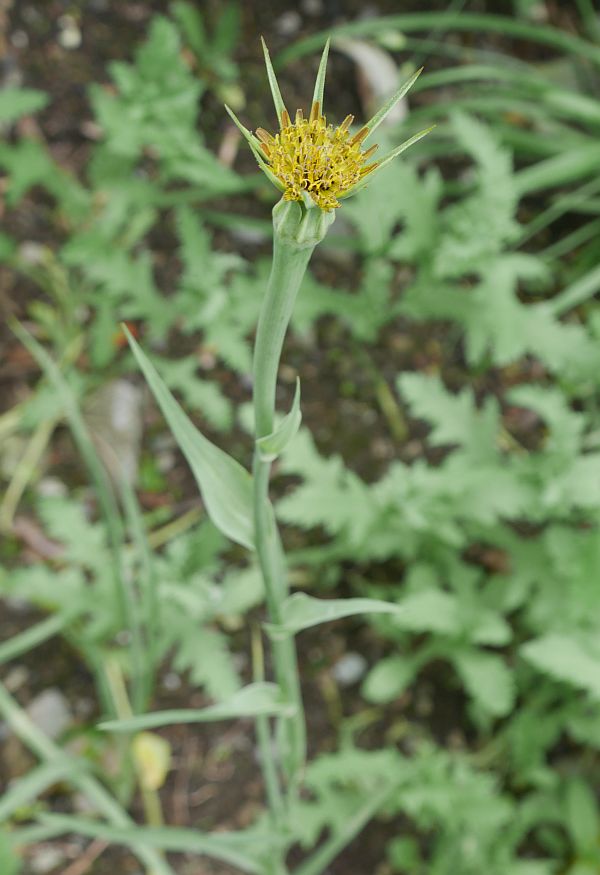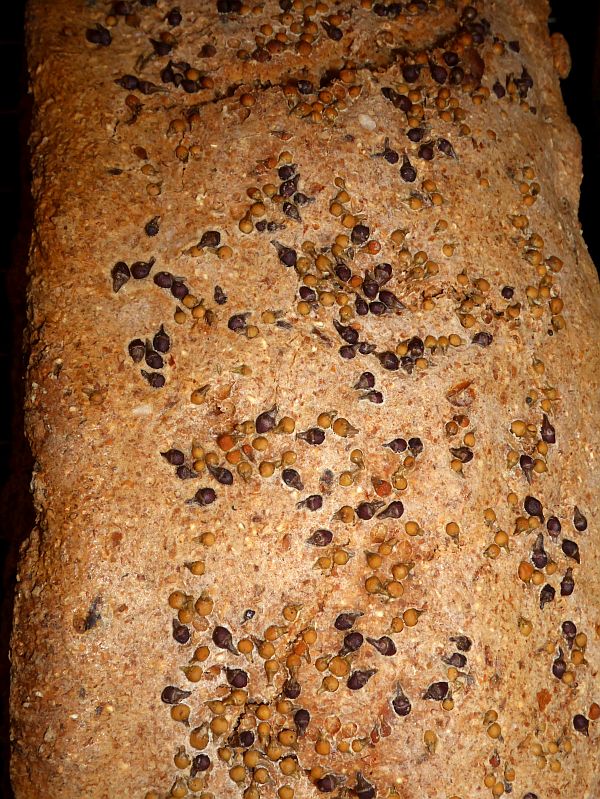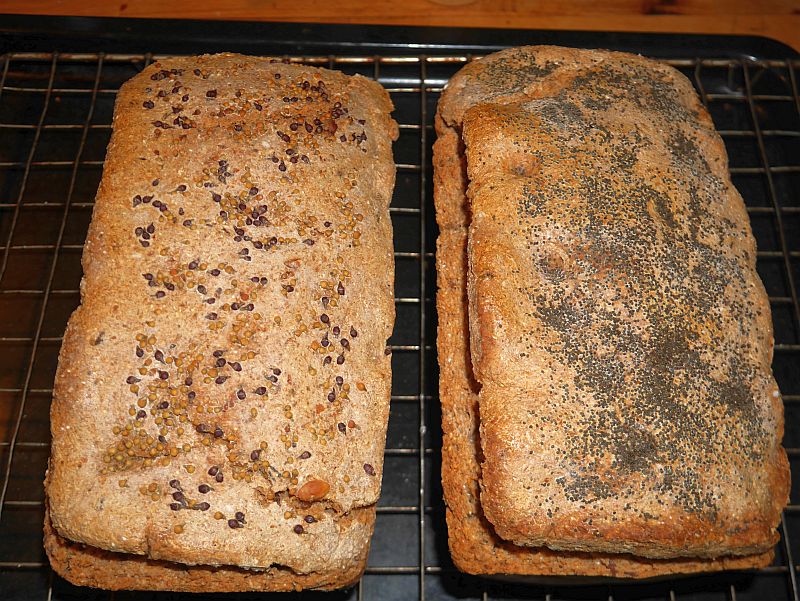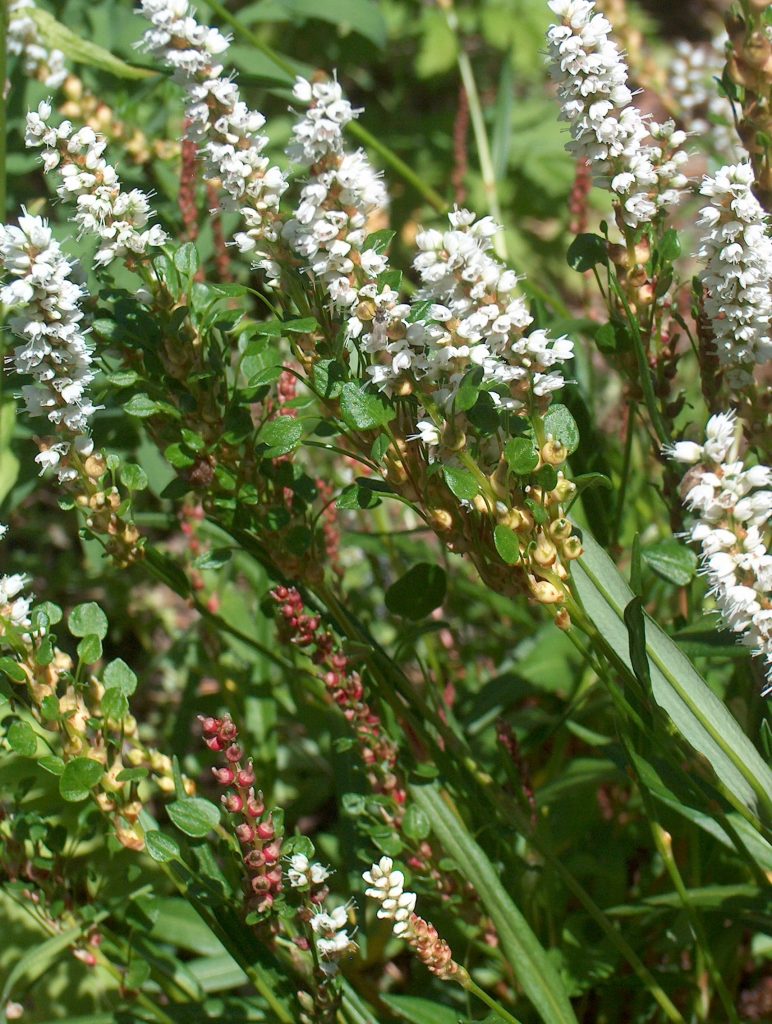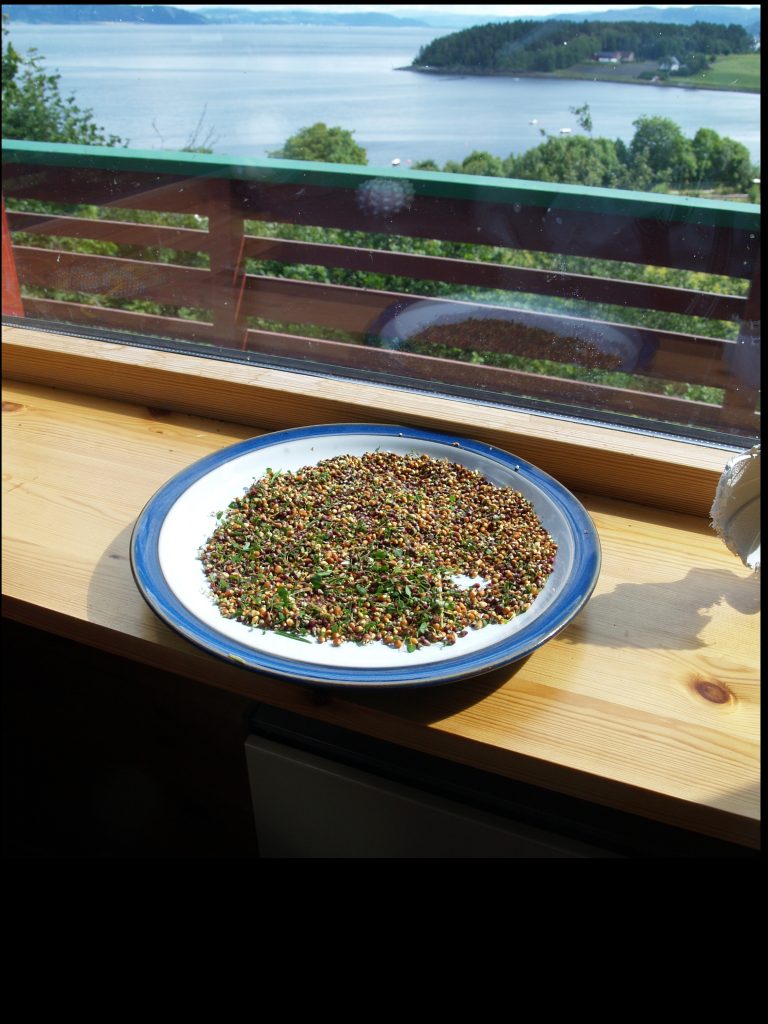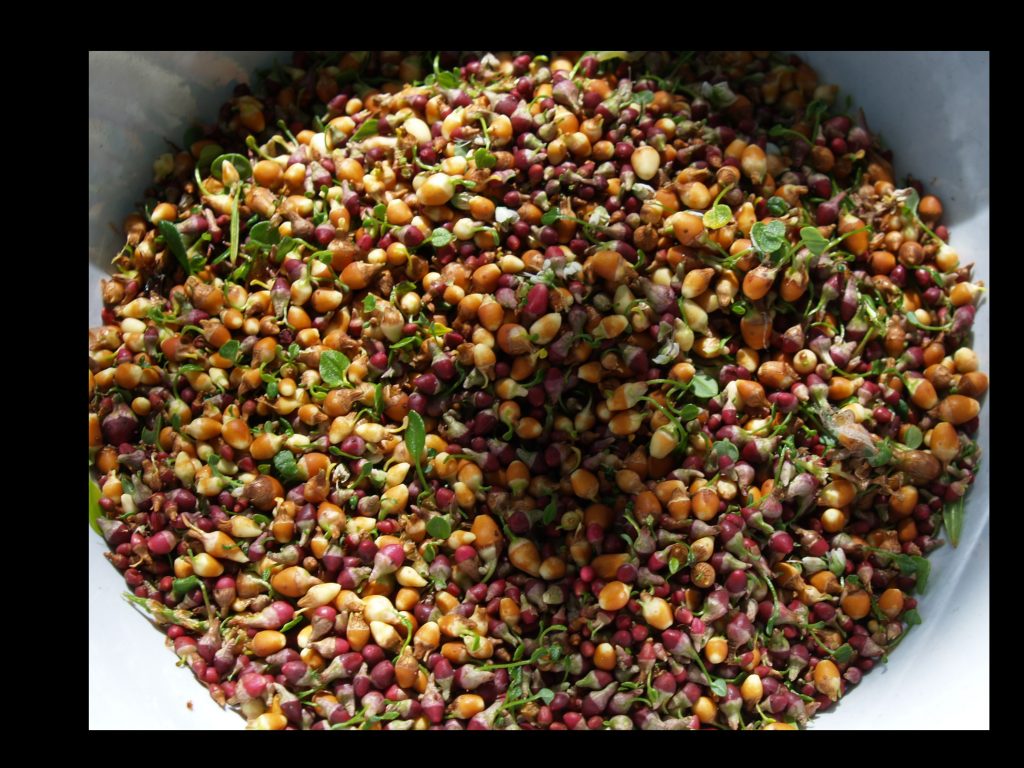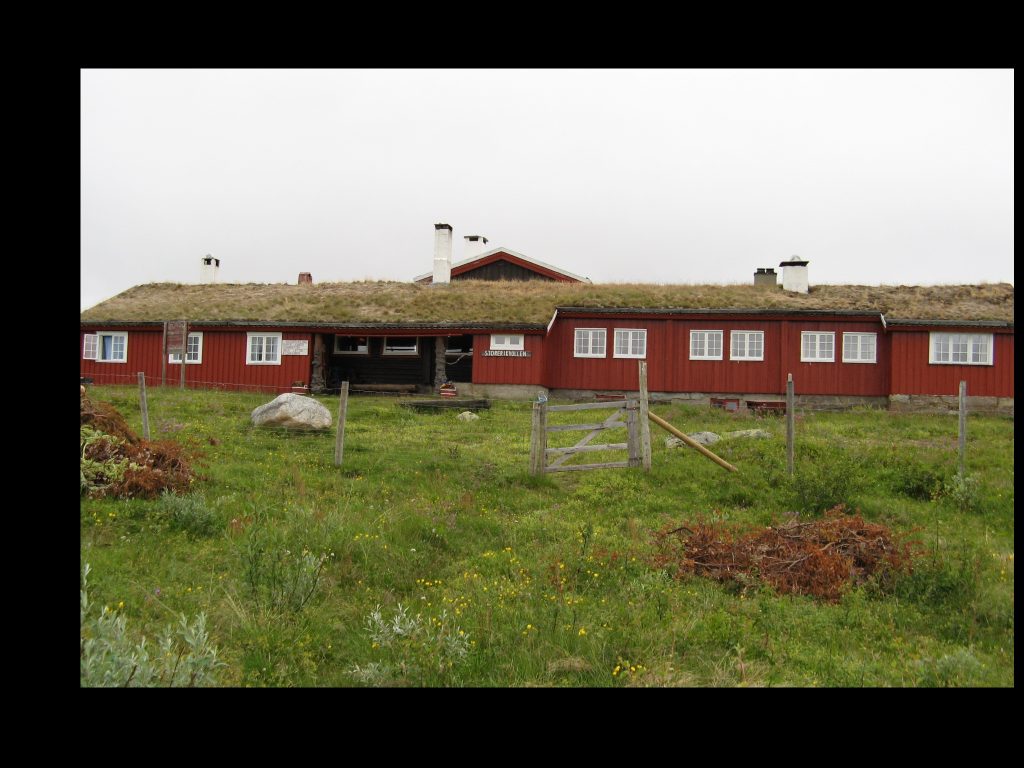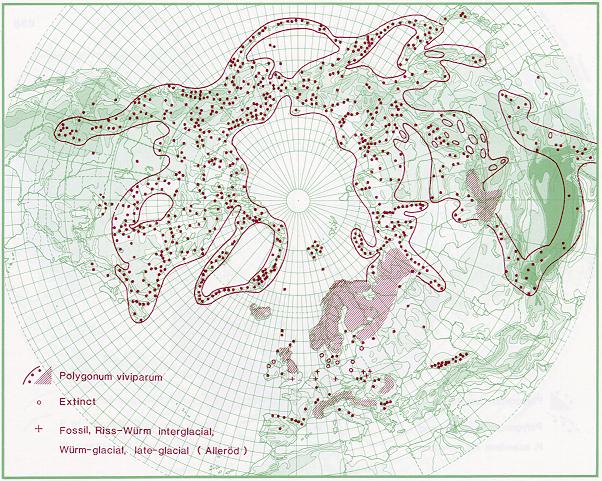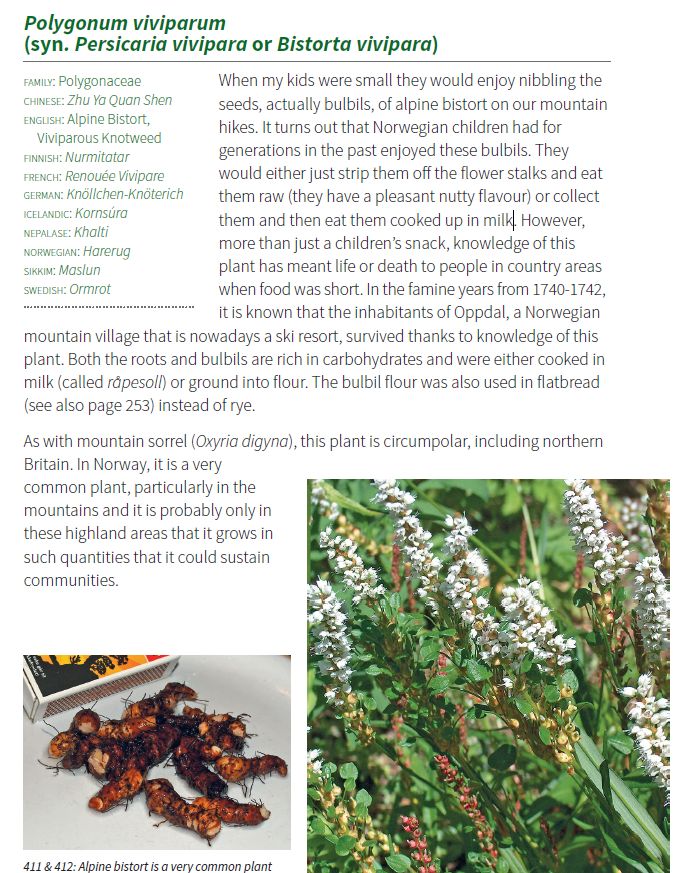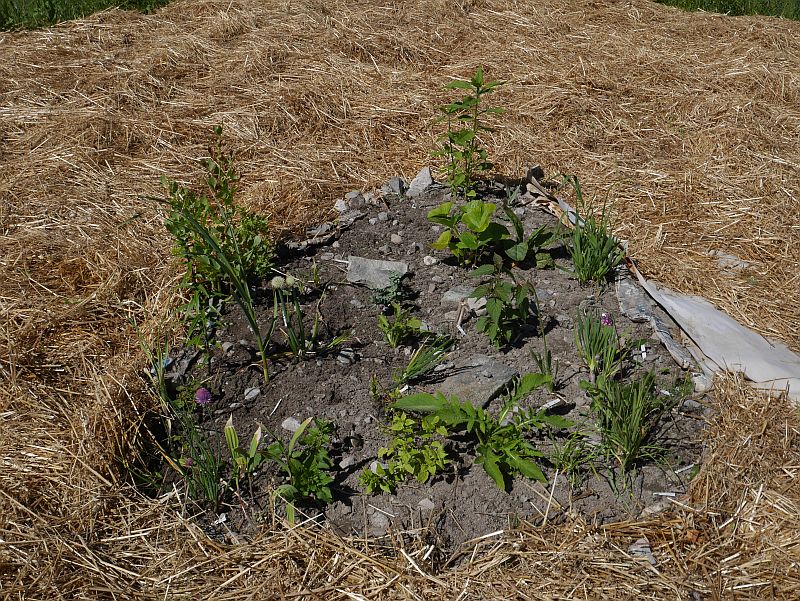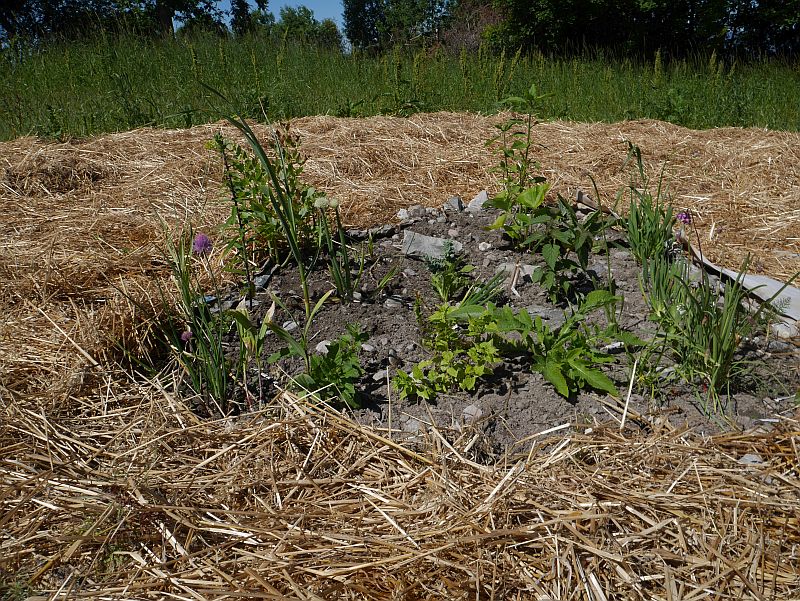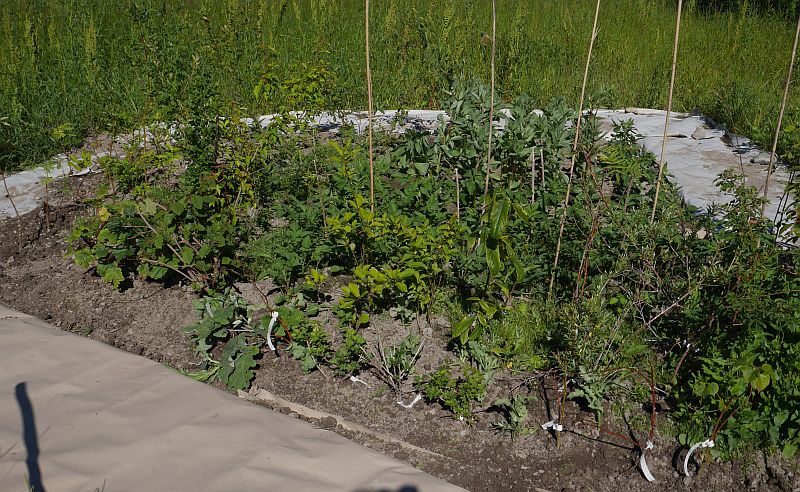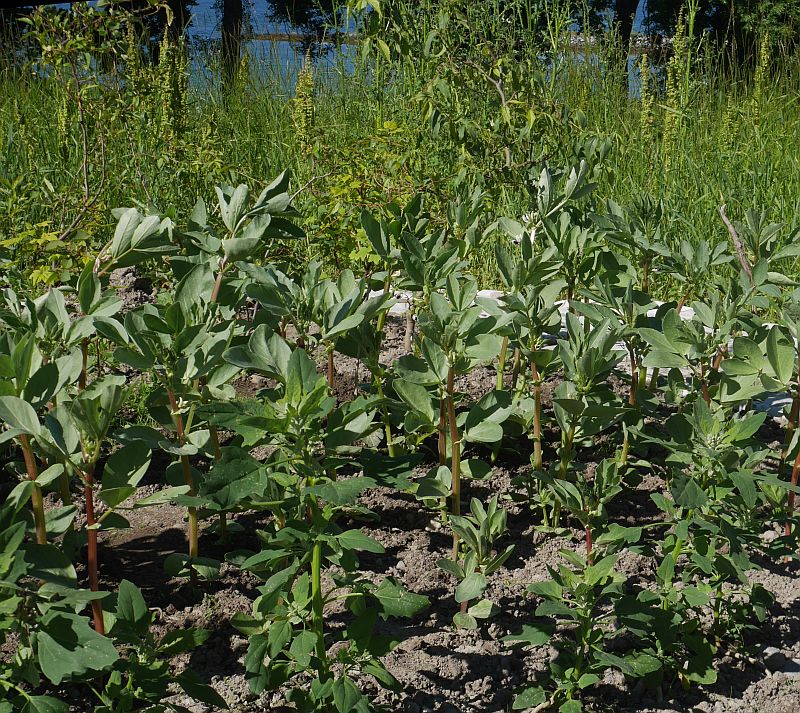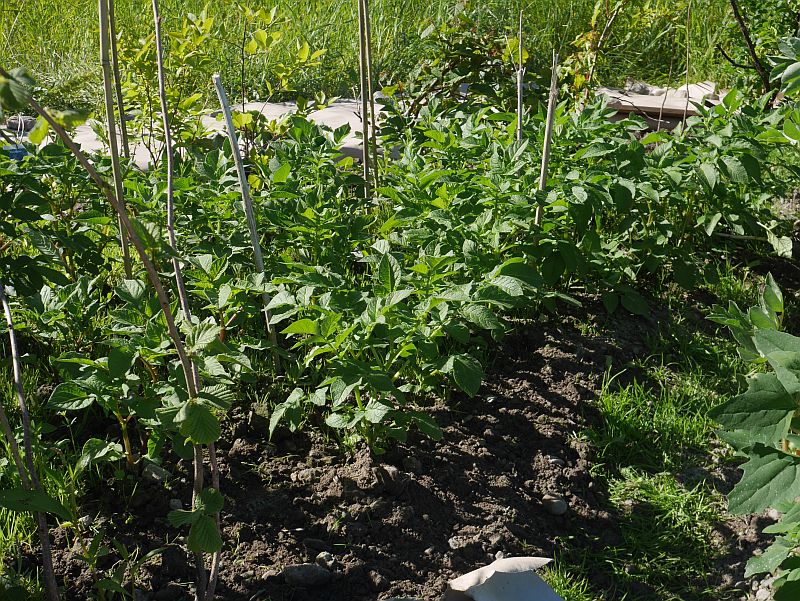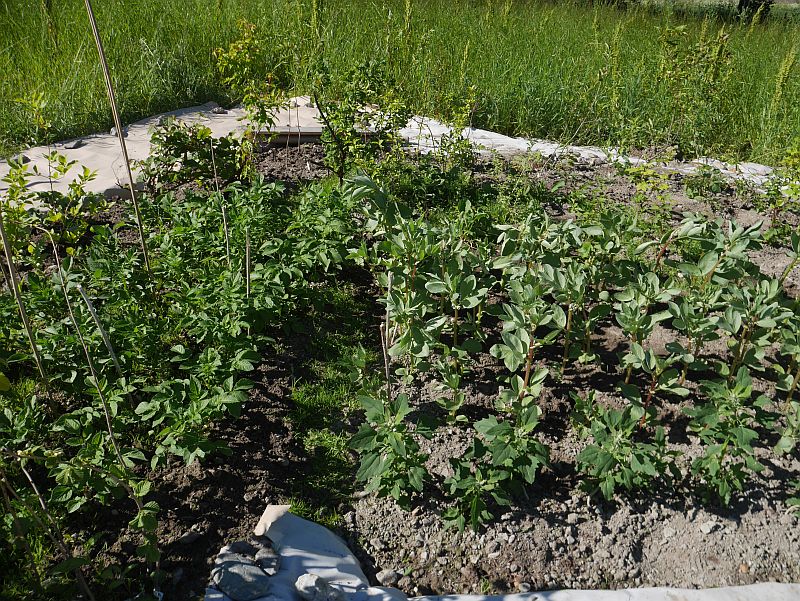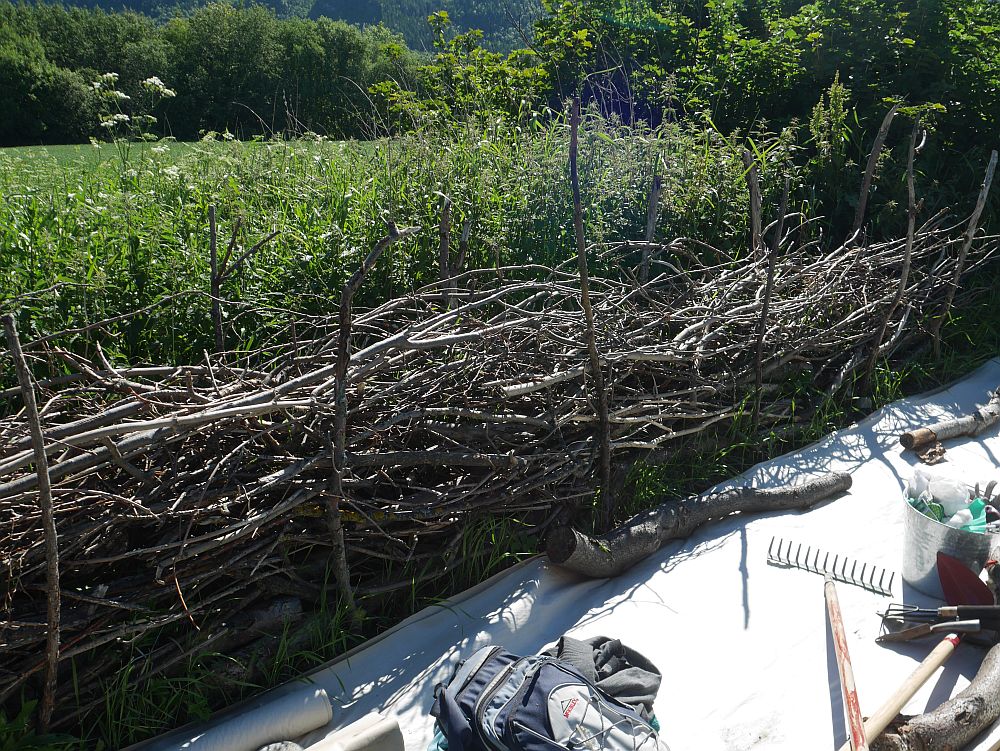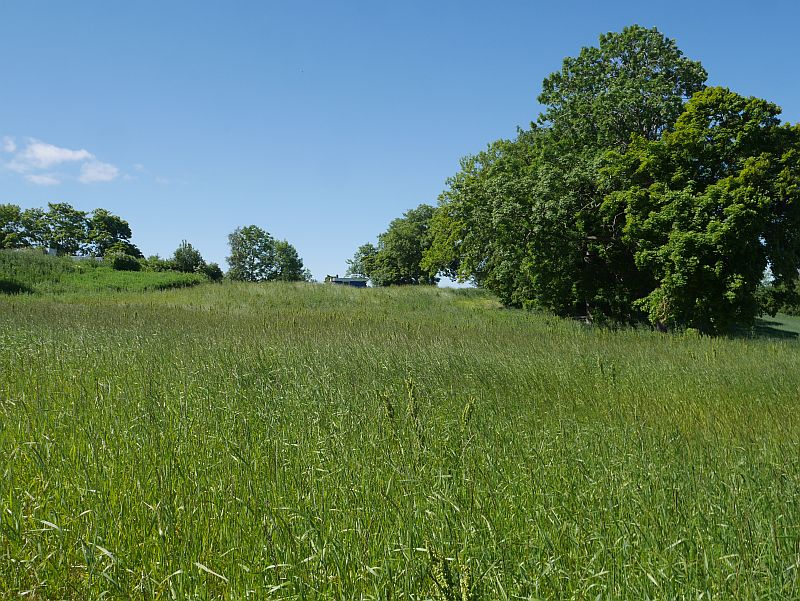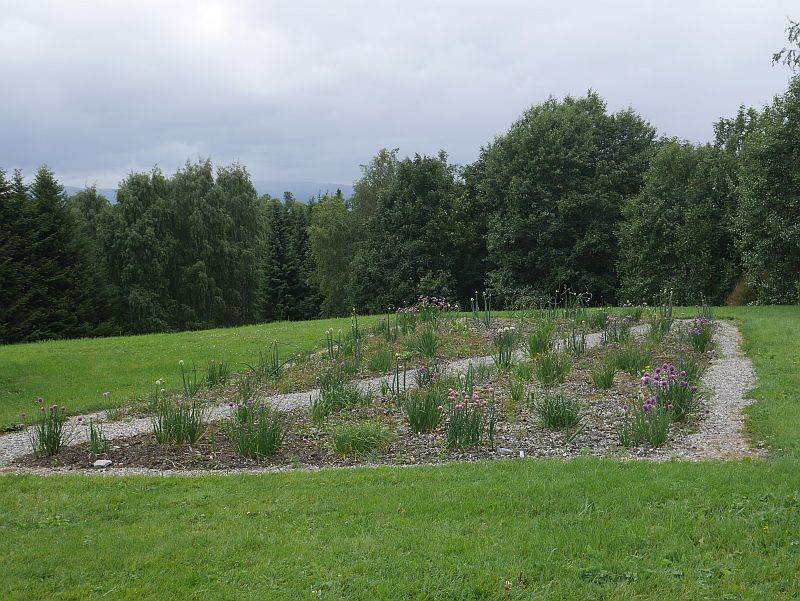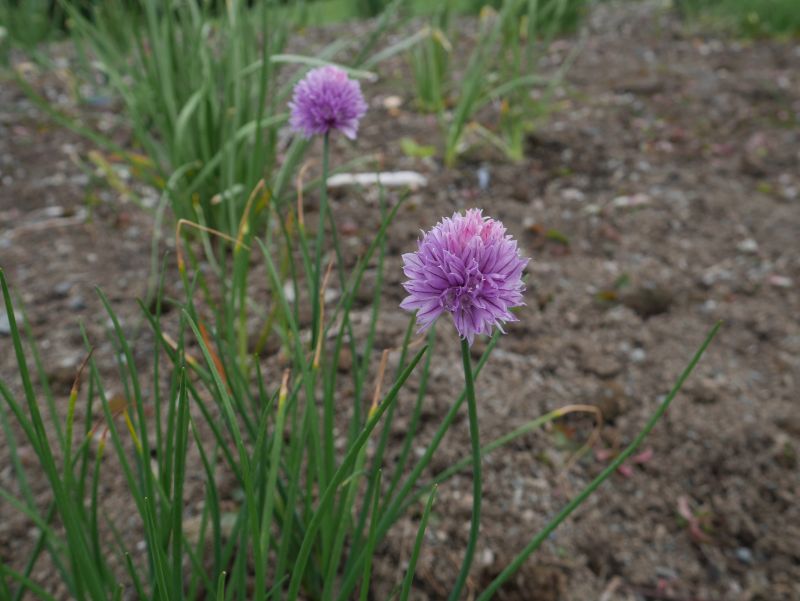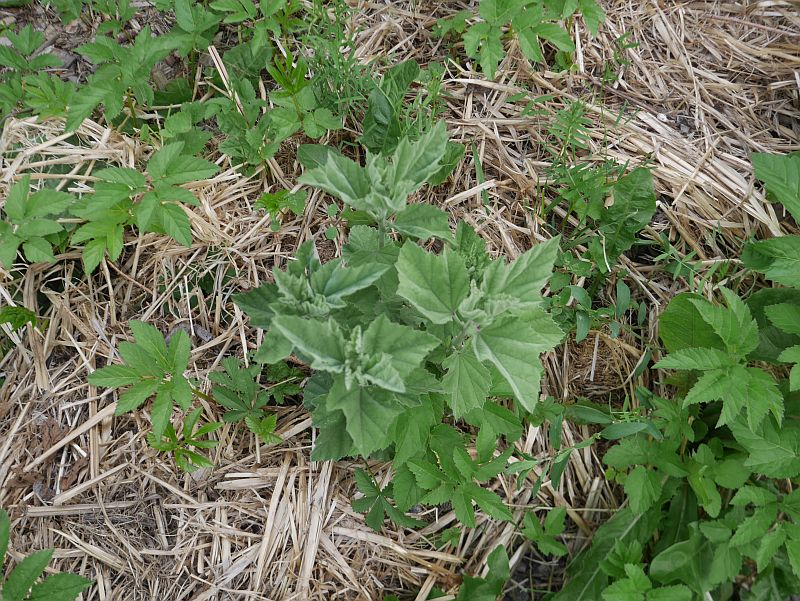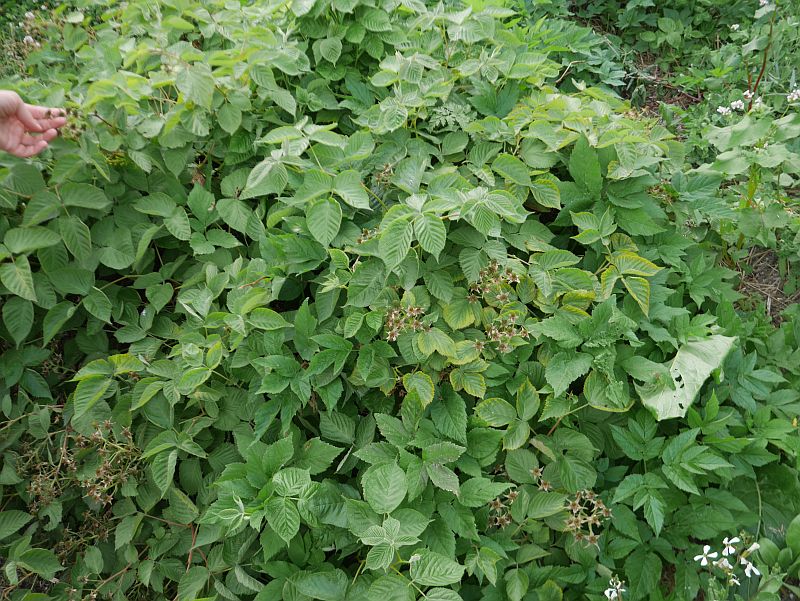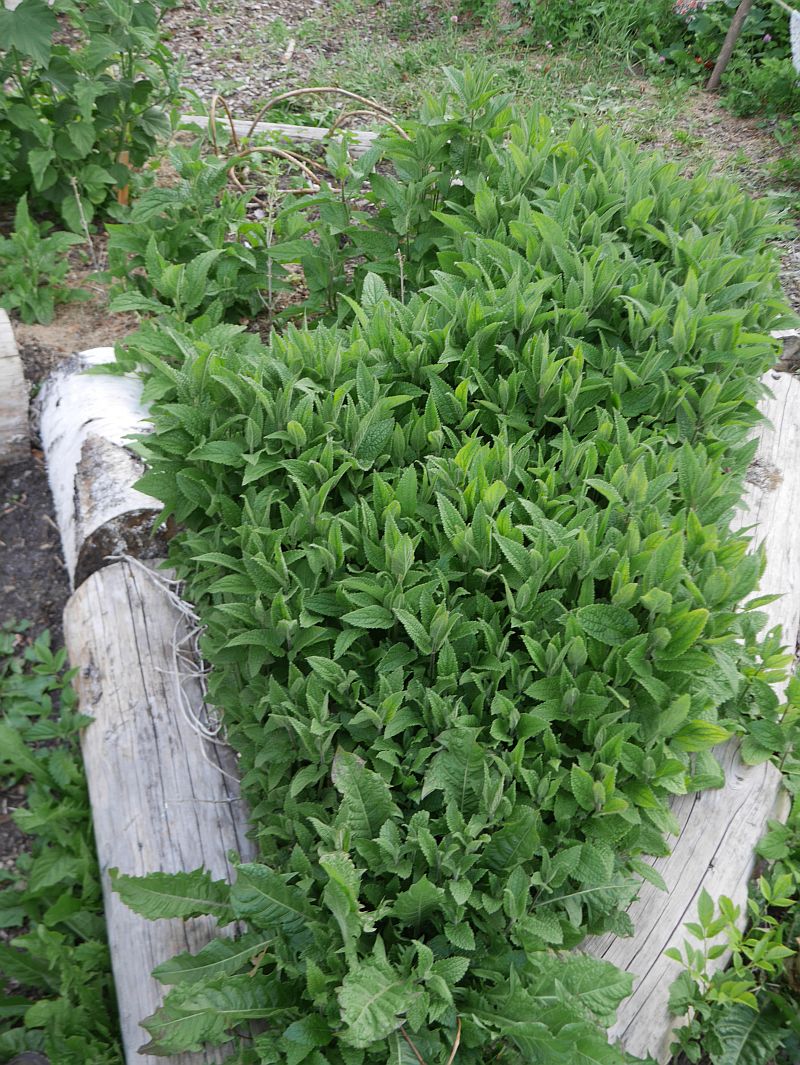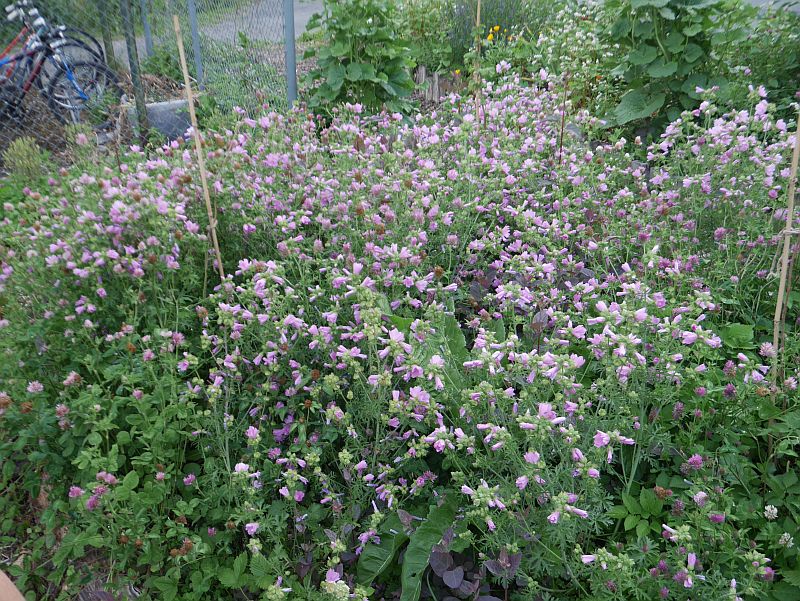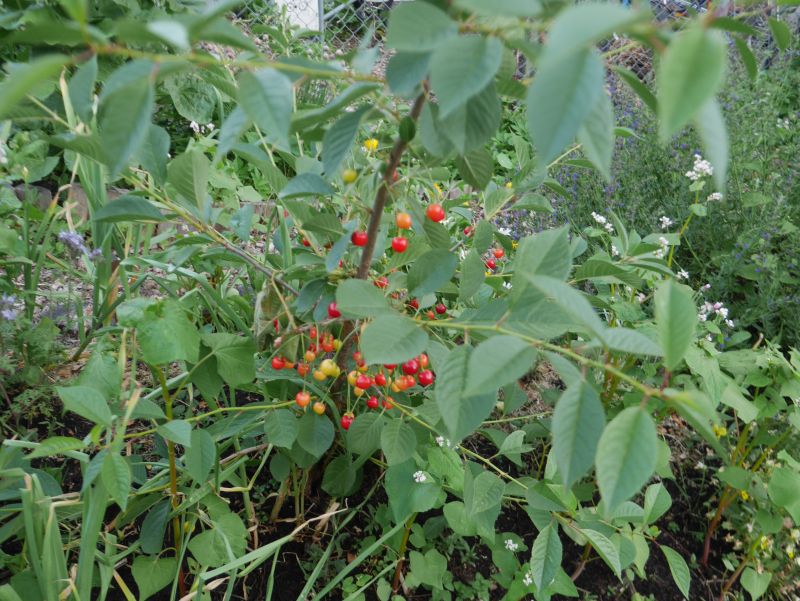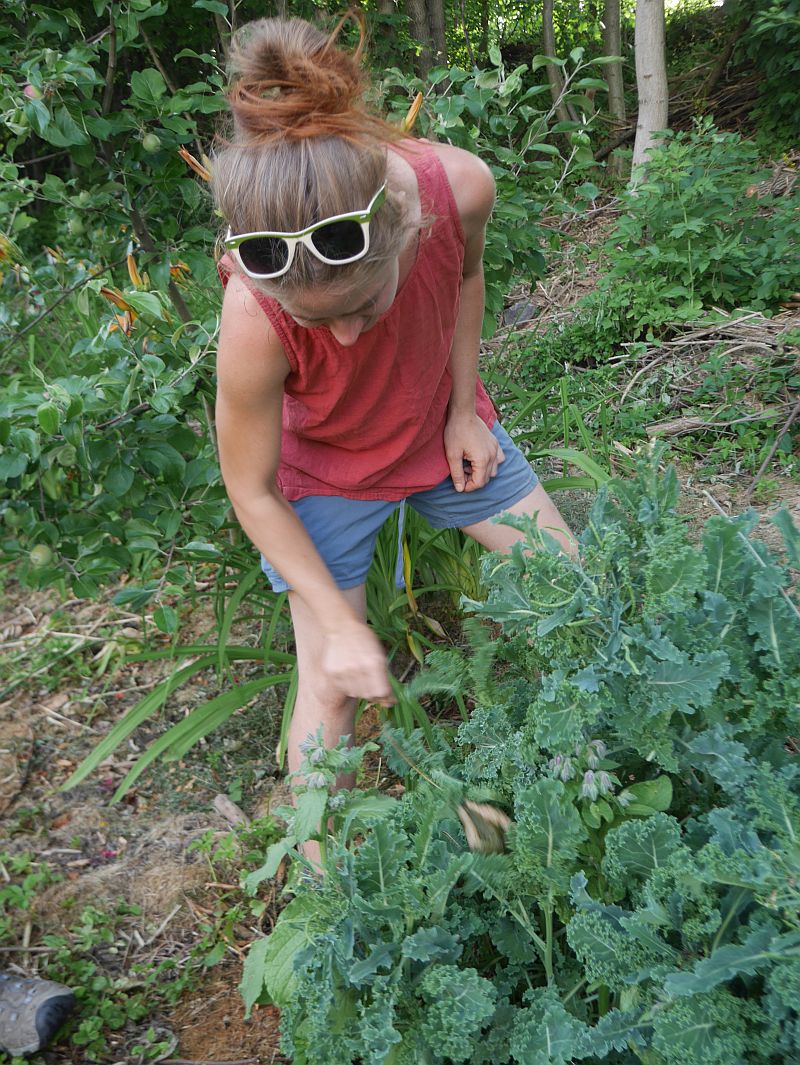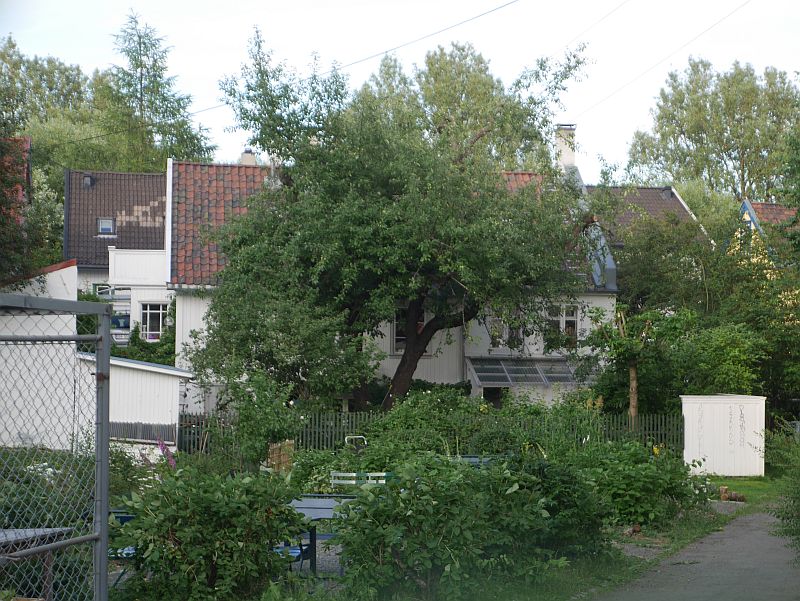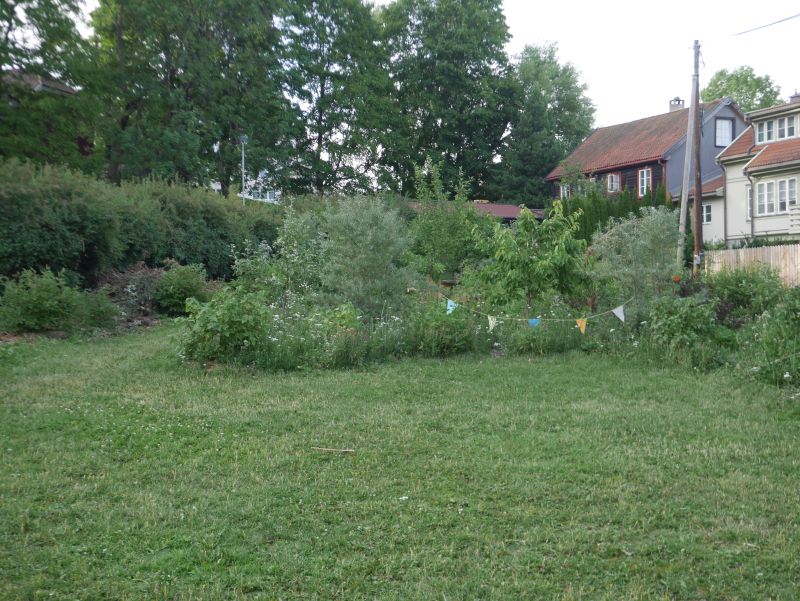Strange goings on…on the other side of the fjord in Skatval :)
Emmer multispecies tempura
Tonight’s dinner was the first tempura of the year, made with Emmer wheat….delicious!
With Mustard “Giant Red”, dandelion, Hosta flower shoots, assorted lily flowers, ground elder, Daubenton and Daubenton variegated perennial kale, Rosa spp., ragged jack kale, Crambe cordifolia flowers and buds, broad bean tops, Houttuynia cordata “Chameleon”, Calendula officinalis flower, Sonchus oleraceus, giant bellflower flower buds, Allium cernuum flower, Allium senescens flowers, Allium rubens flowers, Diplotaxis (perennial rocket), grape leaf, mustard broccolis, various lettuces, Hablitzia tops, Scorzonera flower stems and buds etc.
Old Growth Hablitzia today!
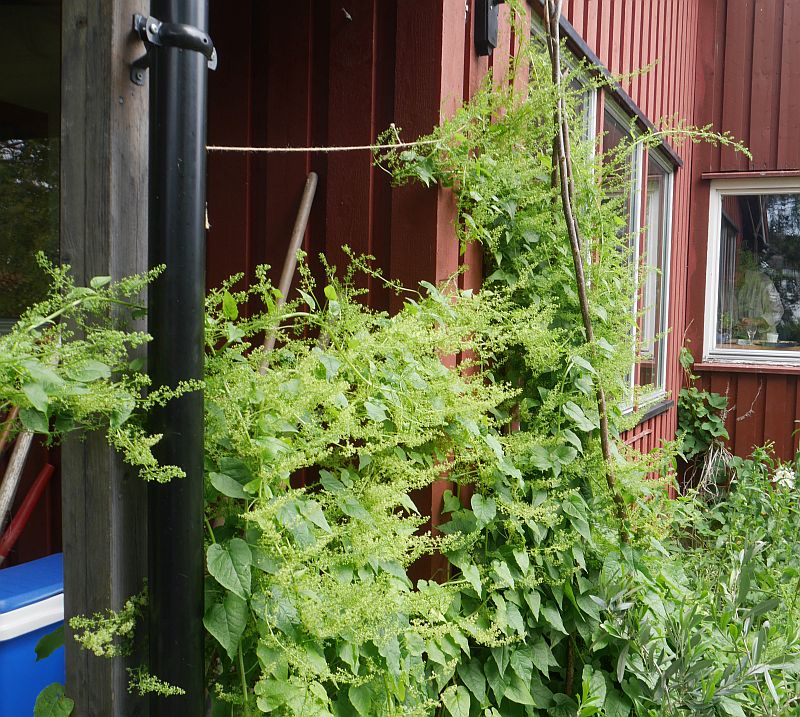
Tragopogon capitatus
A new edible in the garden in flower today is salsify relative Tragopogon capitatus from Xinjiang in China, Kazakhstan, Kyrgyzstan, Tajikistan, Turkmenistan and Uzbekistan!
The seed were sourced from Alexander Naumenko:
Common gull threatening on the balcony!
11pm last night and I opened the bedroom door onto the balcony and a common gull (fiskemåke) decided I was a bit too close to its chick that was somewhere in the neighbourhood and started shouting at me, even landing on the balcony!! I think they had a nest on one of the houses on the hill above me for the first time this year!
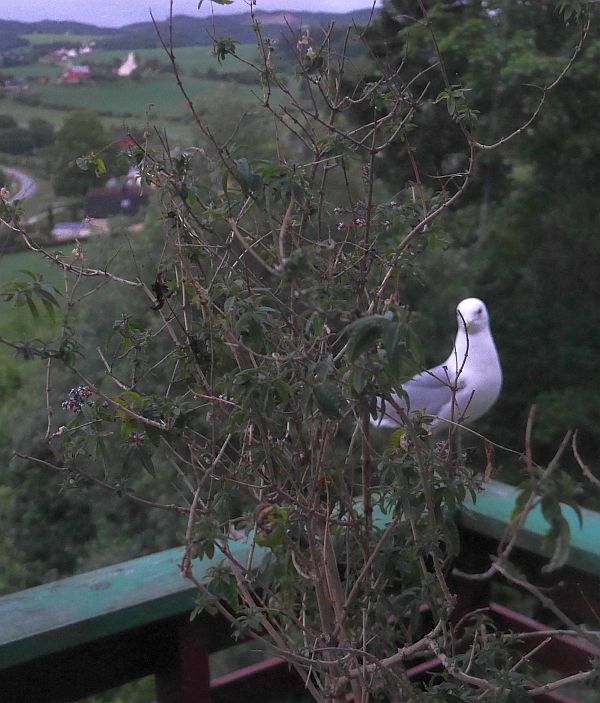
Harerug bread
Harerug? Literally meaning “Hare rye” is a plant found in Norway from the outermost coast to the high mountains and is also one of the few edible plants of Svalbard in the high arctic! It’s Polygonum viviparum (Persicaria vivipara) or alpine bistort in English, in the Knotweed family or Polygonaceae along with many other edible plants such as giant rhubarb and Japanese knotweed and the sorrels and docks. Despite its small size, it has been an important survival food for arctic peoples including in some Norwegian mountain villages in the past as plants have comparatively large nutritious and tasty tubers! I’ve been using the bulbils (hence the latin viviparum meaning living birth as these fall off and form roots giving plants that are genetically identical to the mother plant). They have a delicious nutty taste, something my kids loved as a trail snack in the mountains. Indeed this is a plant one should learn if one is in the mountains as in the event of getting lost, one will still be able to find food. It is a particularly common plant above the tree line here!
It’s also circumpolar as the map in the album shows, even found in the alps and Himalayas. I have a number of different forms in my garden and there are also closely related species which are larger that I believe could have an even bigger potential as a cultivated mountain / arctic crop. There’s a robust subspecies in North America I’d love to get hold of…(Flora of North America: “… with large leaves, compact spikes, and persistent bulblets…. named subsp. macounii”). It’s also one of the 80 in my book Around the World in 80 plants!
Weeding at Være
Spent the day with assorted Væres Venner (Friends of Være) weeding the KVANN (Norwegian Seed Saver) gardens. The good news is that almost all the couch grass has been removed from the world garden (using bastard digging and weeding the few that came up again!)
The Allium (Chicago) garden at Ringve at the end of June 2018
The Allium garden at Ringve has grown well as have the so-called weeds (mostly very young birch trees!). I spent the afternoon weeding and documenting the right hand (easternmost bed)….now known as the New Hampshire bed (I’m told the two beds resemble a map of Vermont and New Hampshire) ![]() (As it looks like the garden will be known as Chicago-hagen due to the fact that the native american name Chicago means onion)!!
(As it looks like the garden will be known as Chicago-hagen due to the fact that the native american name Chicago means onion)!!
This is the link to the last album I made from 31st May: https://www.facebook.com/
Hosta nutrition
A nutritional analysis of Hosta is reported in the enclosed open access article from Japan (2017): “Analysis of essential macro-micro mineral content of twelve Hosta taxa” by Mehraj, Nishimura and Shimasaki. The good news is that the overall conclusion is that Hostas are excellent sources of a number of minerals important in human nutrition!
Various Hosta species were collected from the wild as well as from commercial vegetable growers (it is indicated that the Hosta were simply collected from the wild and are not selected otherwise), they were grown for a year in the open before being moved to pots for the analysis.
A few quotes:
“Hosta plant leaves have higher K and P content than that of the other (common) leafy vegetables.”
“We found one species (H. sieboldii) among the studied 12 species containing 1.15% of Ca, higher than STFC-2015, Japan and all levels found in other studies conducted in different countries for various wild edible plants. Data from our study indicated that H. sieboldii could be an excellent daily diet source of Ca. It appears that Japanese people used to consume this species as a source of calciums. The results of this study indicate that hosta taxa are a good source of Mg and Mn.”
“The Zn content of hosta leaves was higher than other fresh vegetable reported”
“Hosta plant leaves contained higher minerals than that of asparagus. From the results and discussion, it is clear that hosta leaves are a very good dietary source of minerals.”
“H. alismifolia, H. sieboldii, H. nakaiana, H. longissima, H. montana can be considered excellent sources of some minerals and can be recommended for their K, Ca, Fe, P, Mg, Zn content.” (NB! H. montana is often considered as a synonym or subspecies of H. sieboldiana)
Parkens Grøde
Thanks to Elena Katarina for showing me Parkens Grøde at short notice on Sunday evening before I took the train home! The other gardener Marcia Kyle and a newly arrived Swedish guy, Marcus Ivarsson also joined us!
I was very impressed….in a similar way to the first time I visited Holma Skogsträdgård in Sweden….
Parkens Grøde is a permaculture inspired urban farming project in Oslo with many interesting elements including forest garden, hugel beds, insect friendly plants and habitat.
See http://www.xn--parkensgrde-ogb.no/ for more details..




